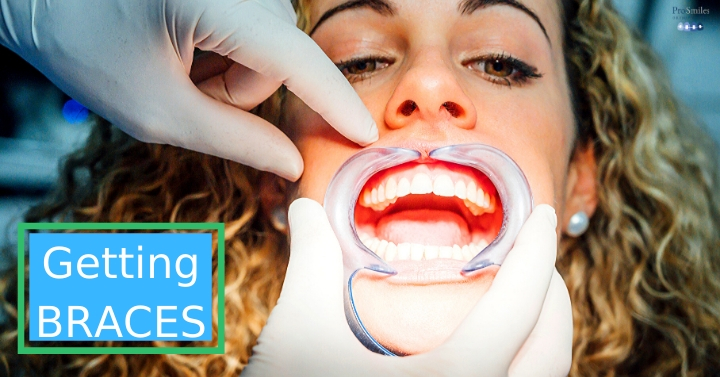The Basic Principles Of Legacy Orthodontics
The Basic Principles Of Legacy Orthodontics
Blog Article
A Biased View of Legacy Orthodontics
Table of ContentsExamine This Report on Legacy OrthodonticsHow Legacy Orthodontics can Save You Time, Stress, and Money.The smart Trick of Legacy Orthodontics That Nobody is Talking AboutLegacy Orthodontics Things To Know Before You Get ThisUnknown Facts About Legacy Orthodontics
In addition, we provide adjustable therapy timetables, versatile settlement choices and a fun, enjoyable experience.An orthodontist is a dental expert educated to identify, avoid, and deal with teeth and jaw irregularities. Orthodontists work with people of all ages, from youngsters to grownups.
Malocclusion, or misaligned teeth, can cause dental concerns, including dental cavity, periodontal condition, and difficult or excruciating chewing. Yet not everybody is birthed with straight teeth. If you have a poor bite or large areas in between your teeth, you might desire to speak with a dental expert specializing in orthodontic treatment.
Legacy Orthodontics for Dummies
( Image Credit: DigitalVision/Getty Images) Orthodontists use dealt with and removable dental gadgets, like braces, retainers, and bands, to alter the placement of teeth in your mouth. Orthodontic therapy is for dental abnormalities, including: Misaligned teethBite issues, like an overbite or an underbiteCrowded teeth or teeth that are too much apartJaw misalignmentThe objective of orthodontic therapy is to boost your bite.
A healthy and balanced bite ensures you can consume, eat, and speak effectively. While you might think about orthodontists as generally for youngsters or teens who need braces, they can fix oral troubles at any type of age. Orthodontists attend college, dental school, and orthodontic institution. After graduation, they spend 2 or 3 years in an orthodontic residency program.
, yet not all dental professionals are orthodontists. They concentrate on two locations: How to effectively and securely relocate teeth Exactly how to appropriately guide growth in the teeth, jaw, and faceOnce an orthodontist has finished training, they have the alternative to end up being board certified.
Top Guidelines Of Legacy Orthodontics
Imbalance, or malocclusion, is one of the most usual reason people see an orthodontist. It is genetic and is the result of dimension differences in between the upper and lower jaw or between the jaw and teeth. Malocclusion causes tooth overcrowding, a misshapen jaw, or uneven bite patterns. Malocclusion is normally treated with: Your orthodontist affixes metal, ceramic, or plastic square bonds to your teeth.
If you have just minor malocclusion, you may have the ability to utilize clear dental braces, called aligners, rather than traditional dental braces (https://legacyortho1.weebly.com/). Some people need a headgear to assist move teeth into line with stress from outside the mouth. After dental braces or aligners, you'll require to use a retainer. A retainer is a personalized device that keeps your teeth in position.
They can develop extra space in the mouth without having to pull teeth. Orthodontists utilize wires, surgical screws, or plates to support your jaw bone.
You might require to see an orthodontist if you have: Crowding or not adequate space for all of your teethOverbite, when your upper teeth come by your base teethUnderbite, when your bottom teeth are also far forwardSpacing or problems with gapsCrossbite, which is when your upper teeth fit behind your base teeth when your mouth is closedOpen bite or a vertical gap in between your front base and upper teethMisplaced midline, when the facility of your bottom and upper teeth don't align Dealing with a dental malocclusion can: Make biting, eating, and speaking easierImprove the symmetry of our face and your overall appearanceEase discomfort from temporomandibular joint disordersSeparate your teeth and make them easier to cleanse, assisting stop dental caries or dental caries It's usually a dental professional that initially notifications misaligned teeth during a regular examination.
Little Known Facts About Legacy Orthodontics.

During your initial orthodontic consultation, you'll likely have: An oral examPhotos taken of your face and smileDental X-raysPanoramic (360 level) he said X-rays of your face and headImpressions to produce mold and mildews of your teethThese tests will certainly aid your orthodontist know how to wage your therapy. leesburg braces. An orthodontist is a dental expert that's had training to treat your teeth and jaw
An orthodontist is concentrated on your bite, so something like a cracked tooth would be dealt with by a dental expert. Orthodontists are focused on your bite, or the method your teeth fit together, and the straightness of your teeth.
Ever questioned how celebs always seem to have perfectly aligned teeth? The solution usually depends on the competent hands of an orthodontist. What exactly does an orthodontist do? Orthodontists are oral specialists who concentrate on remedying irregularities in the teeth and jaws. Their competence exceeds simply creating an attractive smile; it extends to boosting your overall dental health and wellness and function.
Fascination About Legacy Orthodontics

While braces are the most typically identified orthodontic treatment, orthodontists have a diverse toolkit at their disposal. The certain approach chosen depends upon the extent of the case, the client's age, and private preferences. These tried-and-true braces use a system of braces bound to the teeth and linked by cables.
These removable trays are custom-made to progressively shift the teeth's placement. In situations of narrow jaws, palatal expanders can be used to develop area for correct tooth positioning.
Report this page